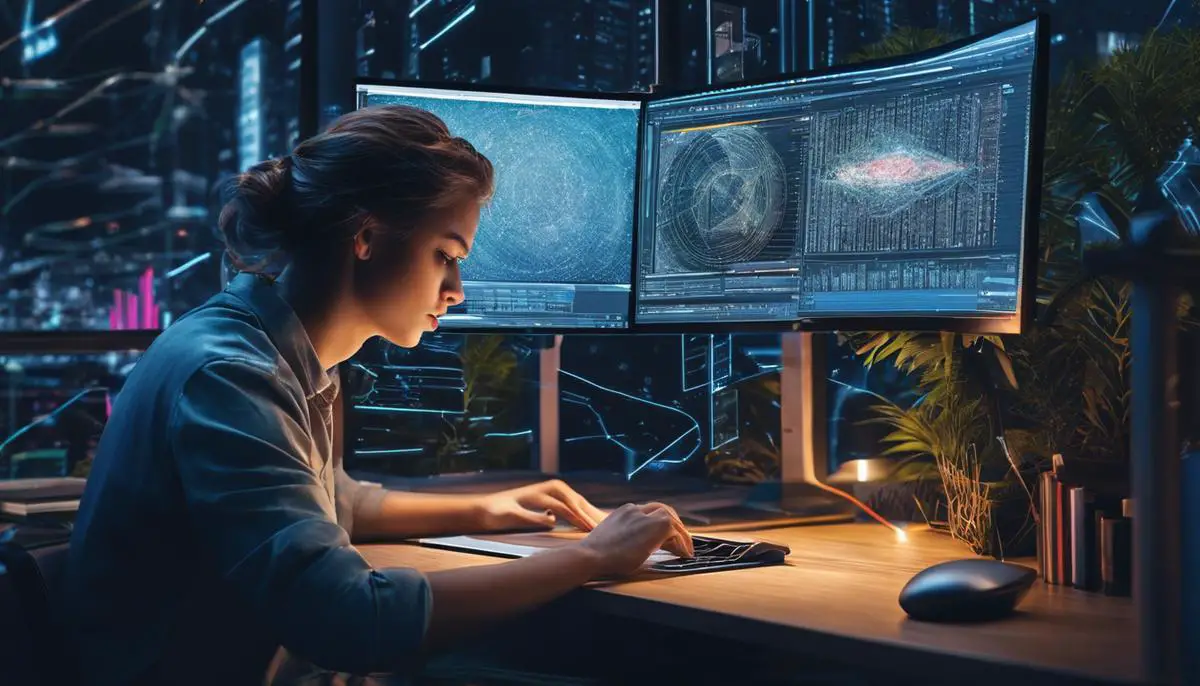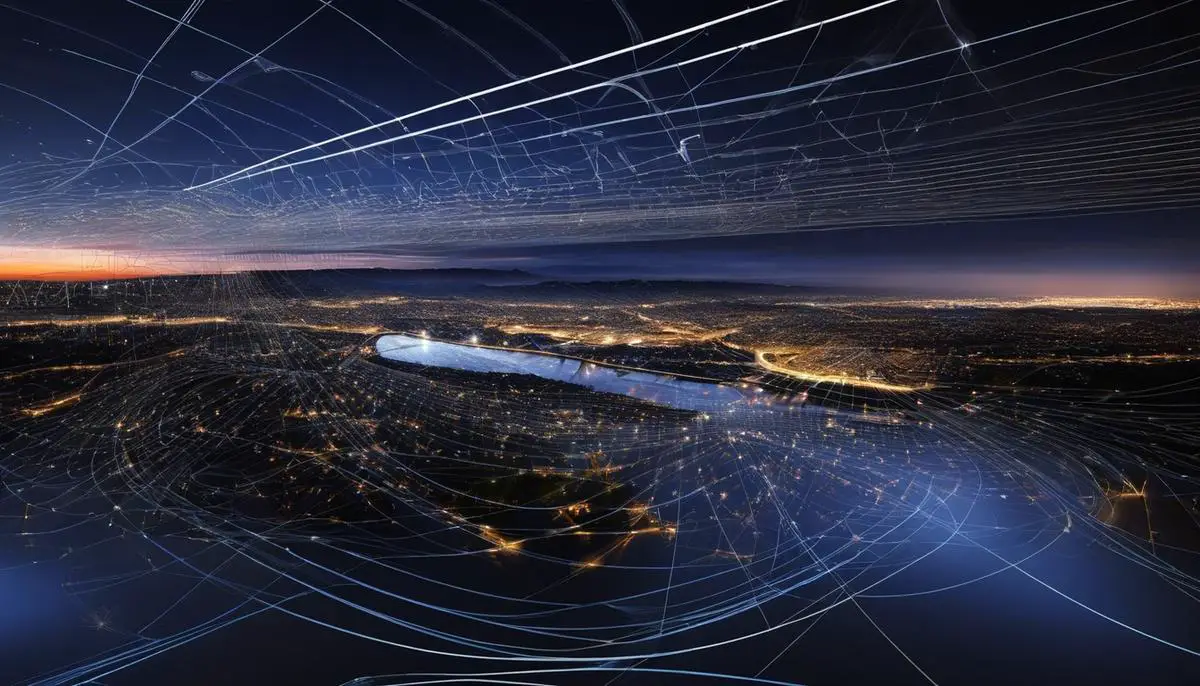The realm of image modification is a confluence of art and science, a space where creativity meets technology to reshape the visual narrative presented to the world. At the forefront of this transformative industry lie the theoretical foundations of image processing — the bedrock upon which the sophisticated algorithms and innovative techniques are built. Diving into the complex interweaving of signal processing, linear algebra, and probability theory, we begin to unravel how mathematical models fuel the evolution of noise reduction strategies, edge detection methodologies, and frequency domain transformations. As we embark on this journey through the intricate world of advanced image enhancement, we also harness the burgeoning power of machine learning and the unrivaled precision of cutting-edge editing tools to redefine the boundaries of what’s visually possible on both professional and consumer fronts.
Contents
Theoretical Foundations of Image Processing
The Indispensable Role of Theoretical Models in Pioneering Image Modification Techniques
Theoretical models provide the extensive framework upon which contemporary image modification techniques are developed and refined. These models are not mere tools; they represent the culmination of an extensive body of research that dissects the intricacies of digital signal processing, optical physics, and computational mathematics. Advanced image modification, an essential component of numerous fields such as medical imaging, remote sensing, and digital media, owes much of its progression to the diligent application of these theoretical foundations.
The underpinning begins with the representation of images as multidimensional signals, a concept deeply rooted in function analysis and linear algebra. Image modification involves manipulations in this signal space, meticulously controlled by the parameters of theoretical models, to achieve desired enhancements or extractions of information. Such manipulations employ transforms such as Fourier or Wavelet, which are essential tools for encoding and decoding information within images. These theoretical constructs allow for localization of changes in both spatial and frequency domains, offering a broad spectrum of possibilities for image manipulation.
Moreover, the construct of convolutional neural networks, a pinnacle in modern image processing and a cornerstone of artificial intelligence, bears witness to the amalgamation of theory and practice. By simulating the hierarchical pattern recognition innate to the human visual cortex, these networks automate the task of feature extraction and refinement in complex imaging tasks, such as facial recognition and anomaly detection in diagnostic imaging.
The utility of theoretical models goes beyond mere modification and dives into the core of image restoration and reconstruction. Sophisticated algorithms derived from inverse problem theory enable the deconvolution and denoising of images, providing clear, usable data from what was once corrupted or incomplete. This holds particular significance in applications where precision is paramount, such as in the calibration of space telescopes or the recovery of historical documentation.
Furthermore, the incisive elegance within iterative reconstruction techniques, a triumph of computational ingenuity inspired by robust theoretical models, has revolutionized the field of tomographic imaging. Delicate balances between computational efficiency and quality of image reconstruction are achieved through algorithms that are rooted in theory but sculpted by practical demands, illustrating the dynamic interplay between theoretical models and their realization in advanced image modification tools.
In light of these facts, the importance of theoretical models in driving the trajectory of image modification technologies cannot be overstated. They provide a deeply rational methodology to approach what would otherwise be an insurmountable challenge—the manipulation of visual data to extend the human capacity for analysis and insight. Through the lens of rigorous theoretical research, advanced image modification will undoubtedly continue to evolve, reflecting the inextricable link between sophisticated theoretical models and groundbreaking technological achievements.

Machine Learning in Image Modification
Machine learning (ML) stands as a transformative force in the realm of image modifications, proffering profound advancements that extend well beyond rudimentary aspects of representation and encoding.
At the forefront of this revolution is the integration of Generative Adversarial Networks (GANs), a class of ML frameworks wherein two neural networks, specifically devised as adversaries, evolve through competition.
This dynamic yields unparalleled finesse in image generation and modification tasks, enabling systems to fabricate or modify imagery with astonishing verisimilitude.
Further enhancing the capabilities of machine learning in image modification is the advent of transfer learning methodologies.
This pivotal approach leverages pretrained models on voluminous datasets, allowing for the efficacious adaptation to specialized image modification tasks with minimal requirement for task-specific data.
Consequently, transfer learning not only streamlines the process but also economizes computational resources, paving the way for far-reaching applicability in fields where data scarcity prevails.
Moreover, ML contributes to the automation and optimization of segmentation and object recognition within images, functionalities indispensable to several applied domains, including medical diagnostics and autonomous vehicular technology.
Deep learning architectures, typified by U-Net and its derivatives, have demonstrated exceptional proficiency in delineating intricate patterns, dispatching laborious pixel-level modifications to the annals of obsolescence.
In the intricate dance of preserving image integrity while enabling alteration, machine learning algorithms have also catalyzed the development of sophisticated noise reduction and super-resolution techniques.
These algorithms enable the refinement of image detail and the mitigation of various disruptive artifacts that historical methodologies struggled to address.
Delving into the synthesis of virtual environments, ML-guided techniques facilitate the seamless blending of virtual objects into real-world imagery, a crucial element in augmented reality (AR) applications.
This seamless amalgamation necessitates a profound understanding of scene geometry, lighting, and photorealistic texturing, all of which are now attainably modeled and inferred with the assistance of machine learning.
Lastly, the nascent domain of style transfer illustrates the harmonious integration of art and science through ML.
By harnessing convolutional neural networks, it is feasible to impart the stylistic essence of one image onto another, inaugurating a new frontier for creative expression and design.
The discourse surrounding machine learning in image modification underscores a broader narrative of technological sovereignty, where the once-miraculous becomes commonplace, and the limits are perpetually redefined.
As research propels forward, the symbiosis of machine learning with image modification continues to surge, promising a future where visual communication is bound only by the limits of collective imagination.

Advanced Techniques in Image Editing
Advancements in machine learning and computational intelligence have markedly influenced the progression of image editing techniques. Contemporary augmentation methods utilize Generative Adversarial Networks (GANs), sophisticated systems wherein two neural networks contest with one intertwined goal: to generate new, synthetic instances of data that can pass for real data. These networks have revolutionized the traditional paradigms of image generation and manipulation, enabling the synthesis of photorealistic images from textual descriptions and the seamless retouching or altering of image content.
Transfer learning, another pivotal innovation, circumvents the resource-intensive process of training deep neural networks from scratch. By repurposing pre-trained models for new tasks, transfer learning conservatively employs existing neural network weights, fine-tuning only the end layers to accommodate the specificities of a novel dataset. This practical approach serves to amplify the diversity and adaptability of image editing capabilities with a markedly reduced computational overhead.
Machine learning now also fortifies the automation and optimization of segmentation and object recognition processes. These intelligent algorithms analyze attributes and contexts within an image to segregate and delineate distinct objects, thereby enhancing the precision and speed of feature isolation and manipulation.
Furthermore, noise reduction and the quest for super-resolution stand at the forefront of current technological endeavors. Sophisticated algorithms have emerged that effectively suppress noise while extrapolating high-resolution details from images, conferring an unprecedented clarity and enhancing the fidelity of enlarged photographs or low-quality visuals.
Machine learning-guided techniques are revolutionizing AR applications, orchestrating the blending of virtual objects into real-world environments with extraordinary verisimilitude. It’s a quantum leap from rudimentary compositing methods to algorithms that comprehend lighting, shadow, and perspective to embed virtual elements seamlessly into actual scenes.
A remarkable phenomenon in the field of image editing is the application of style transfer. Exploiting the power of convolutional neural networks, this technique enables the imposition of aesthetic styles from one image onto another. Effectively, this empowers a level of creative expression previously unattainable, manifesting a synthesis between technology and art that catalyzes innovative forms of design and digital creativity.
The continued refinement of these machine learning technologies underscores an emergent era of technological sovereignty. The innovative leaps in image modification hint at a future where the boundaries of reality and digital fabrication continue to blur, fostering an age of both awe-inspiring potential and profound consideration for the ethical implications of such indistinguishable realisms.

Ethical Considerations in Image Modification
In the intricate weave of advanced image modification, a domain of seemingly endless potential, ethical considerations emerge as pivotal signposts guiding the conscientious application of these transformative technologies. At the heart of these deliberations lies the vital commitment to uphold integrity, authenticity, and the protection of individual rights amidst the burgeoning capabilities of image processing.
The proliferation of deepfakes, leveraging machine learning techniques such as Generative Adversarial Networks (GANs), underscores the pressing urgency for ethical frameworks. These convincing yet fabricated visual and auditory deceptions challenge the very fabric of truth, inviting misuse in areas including but not limited to politics, law enforcement, and personal privacy. Ethicists and technologists must therefore coalesce to establish guardrails that prevent malicious use, while fostering an environment conducive to positive societal contributions through these advancements.
Employment of transfer learning in deep neural networks and automated object recognition systems also bears ethical scrutiny. While these applications manifest remarkable efficacies in tasks ranging from medical diagnostics to environmental monitoring, the opacity of algorithmic decision-making processes risks infringing on principles of informed consent and fairness. Transparency and explainability become essential tenets to ensure accountability and avoid undue bias, prejudice, or inadvertent harms perpetuated against individuals or groups.
The domain of noise reduction and super-resolution further exemplifies ethical quandaries, especially as they pertain to surveillance and individual autonomy. Enhancements that clarify or reconstruct images can serve noble ends, yet simultaneously facilitate invasions of privacy when deployed without appropriate checks or consent. Thus, the mantle of ethical responsibility extends to safeguarding the sanctity of personal spaces and the empowerment of individuals to control their own digital footprints.
The melding of digital and physical realms through augmented reality carries with it a profound responsibility. When virtual elements seamlessly integrate into the tangible world, discerning what is real becomes progressively formidable. Creators and disseminators of AR content must conscientiously avert the dilution of reality, ensuring that users can navigate these blended experiences with confidence in their perception and their ability to differentiate authentic from synthetic stimuli.
Moreover, style transfer techniques echo with artistic and cultural implications. While they engender new avenues for creative expression, they also stir the waters of intellectual property rights and the potential for cultural appropriation. A balance must be struck wherein innovation thrives, and respect for original creation and cultural heritage is preserved.
Finally, amidst the continuous advancement of machine learning in image modification and the blurring boundary between actuality and digital fabrication, the ethical imperative emerges to counteract the erosion of trust. In constructing a framework of ethics that accompanies the march of progress, it is incumbent upon the scientific community to lead with foresight and stewardship. Vigilant and ongoing evaluation of the ethical dimensions of these technologies must be an integral part of the research and development process, ensuring that advancements serve to augment human experience and societal welfare without compromising moral obligation or societal trust.

Future Directions in Image Processing Technology
In the evolving field of image processing, recent developments signal the advent of profound transformations that extend beyond technical advance into the realms of ethics, security, and societal impact. Emerging trends suggest an interdisciplinary approach to research, where technology intersects with philosophy, law, and social sciences.
Morphing the fabric of visual perception, Synthetic Data Generation is a formidable trend that illustrates the power of image processing to create data where none exists. Leveraging techniques like GANs, synthetic data is not only expanding the boundaries of training datasets for machine learning models but is necessitating a reevaluation of authenticity in digital media. Such data are instrumental in driving forward machine learning when real datasets are insufficient, yet they raise poignant questions regarding the delineation between reality and simulation.
In the quest for hyper-realism and interactivity, Light Field Photography captures information about the light field emanating from a scene, enabling new levels of realism in image rendering. This technology holds promise for significant enhancements in Virtual Reality (VR) and AR experiences by simulating how humans perceive light and depth, thus paving the way for immersive environments that may soon be indistinguishable from reality.
Quantum Image Processing, a nascent yet potentially revolutionary domain, posits quantum computing as the next frontier in handling complex image processing tasks. Quantum algorithms are postulated to perform operations at speeds unattainable by classical computers, compelling the image processing community to turn an eye towards quantum mechanics for solutions to their most intransigent problems.
In the ethical dimension, researchers are grappling with the ramifications of Deepfakes. This perturbing application of image processing has engendered a new awareness of the need for robust methods of authentication and verification of digital content, leading to the development of advanced watermarking, image provenance, and forensic techniques.
Furthermore, a significant research direction unfolds in the pursuit of Explainable AI (XAI). As machine learning algorithms, especially in the context of image processing, become increasingly sophisticated, the imperative for transparency grows. XAI endeavors to make the processes behind AI-driven image processing understandable to humans, ensuring that ethics and accountability are not eclipsed by efficiency and innovation.
In parallel, Edge Computing is anticipated to influence image processing considerably. By performing data processing at the edge of the network, closer to where data is generated, the paradigm shift in computing points to a future where real-time image processing and decision-making become possible at the device level, challenging the supremacy of cloud-based infrastructures and leading to a more distributed and resilient ecosystem.
Lastly, the concern for cybersecurity in image processing is intensifying. The digitization of imagery, combined with the emergence of sophisticated manipulation techniques, mandates the development of advanced security protocols. The interface of cryptography and image processing is a fertile ground for research into how to protect sensitive visual information in an age where data breaches can lead to substantial socio-economic consequences.
As the field of image processing continues its relentless march, it is essential to anticipate the profound implications these trends portend for society. Researchers and practitioners remain guardians at the nexus of technological innovation and ethical stewardship, ensuring that progress serves the greater good while guarding against the pitfalls of unintended consequences.

Charting the course of image processing technology reveals a thrilling horizon where art converges with the precision of advanced computation, revealing untapped potentials in both expression and function. The ever-expanding weave of quantum image processing, holography, and immersive experiences via AR and VR only scratches the surface of what is yet to come. As these innovations emerge, they carry with them the profound responsibility of ethical application and the enduring quest for authenticity within the vast digital tapestry. The future is a canvas of limitless possibility, poised to be shaped by the synergies of AI, IoT, and the transformative power of next-generation image modification technologies — a testament to human ingenuity in the continuous pursuit of visual excellence.

Emad Morpheus is a tech enthusiast with a unique flair for AI and art. Backed by a Computer Science background, he dove into the captivating world of AI-driven image generation five years ago. Since then, he has been honing his skills and sharing his insights on AI art creation through his blog posts. Outside his tech-art sphere, Emad enjoys photography, hiking, and piano.
